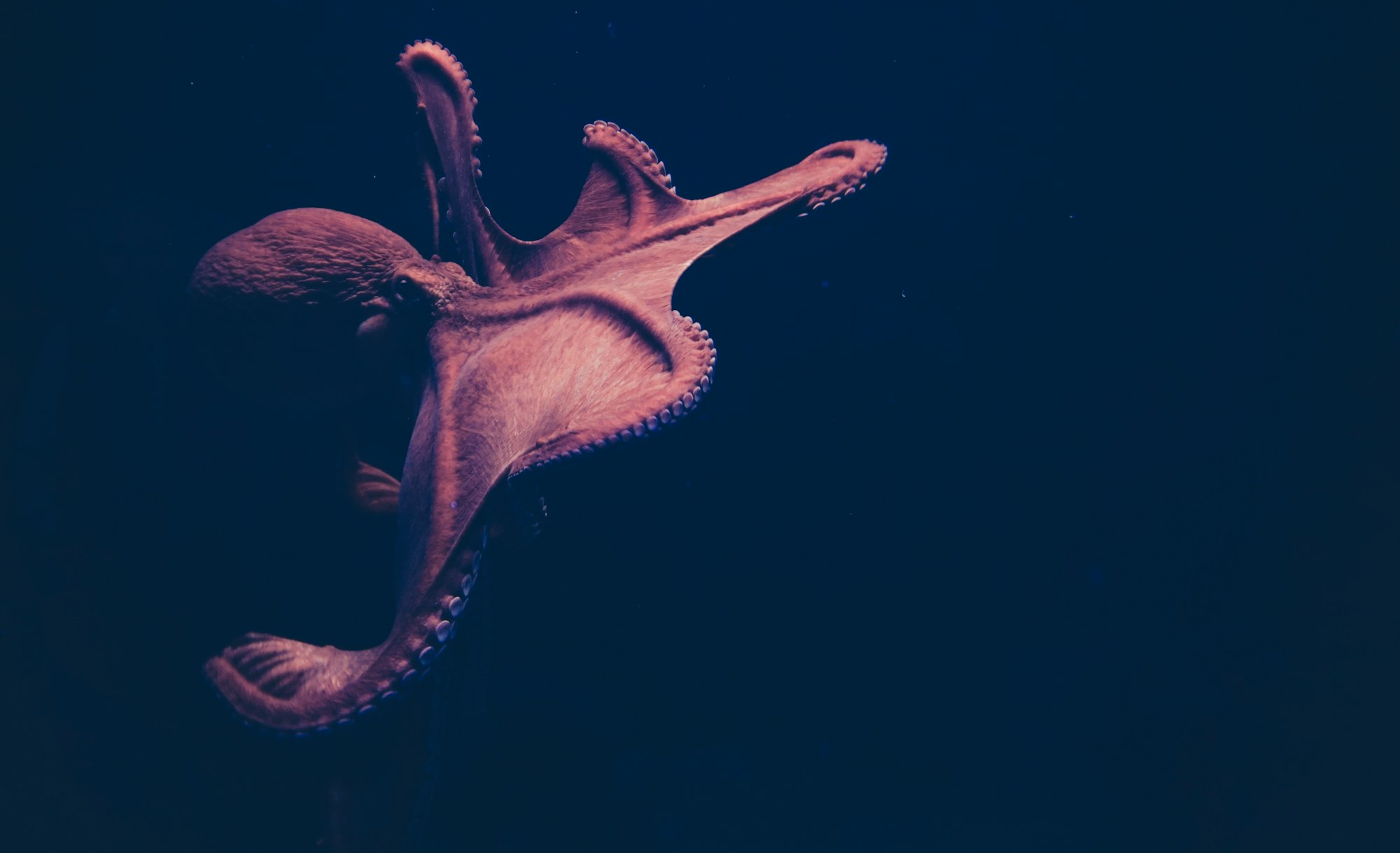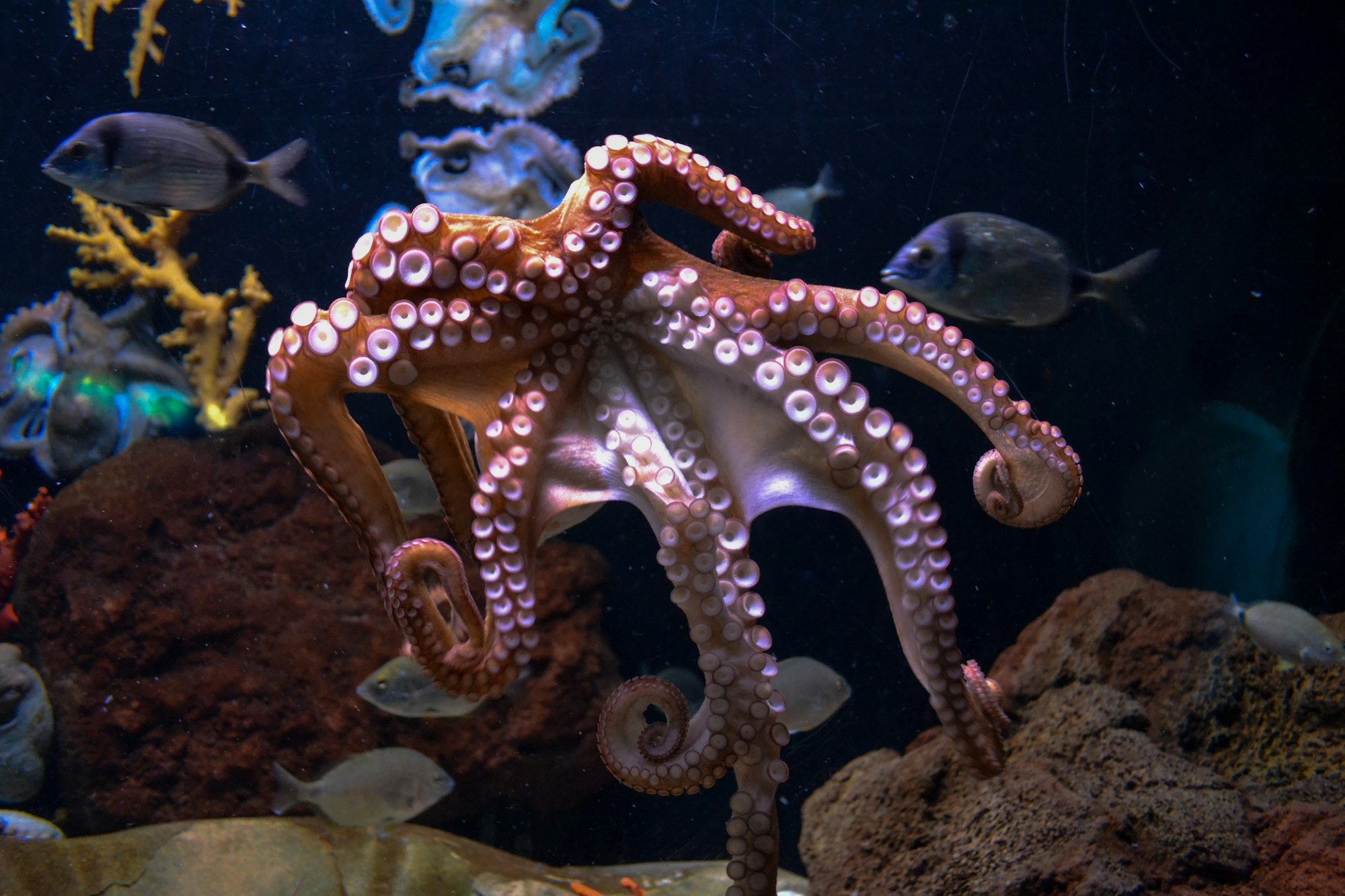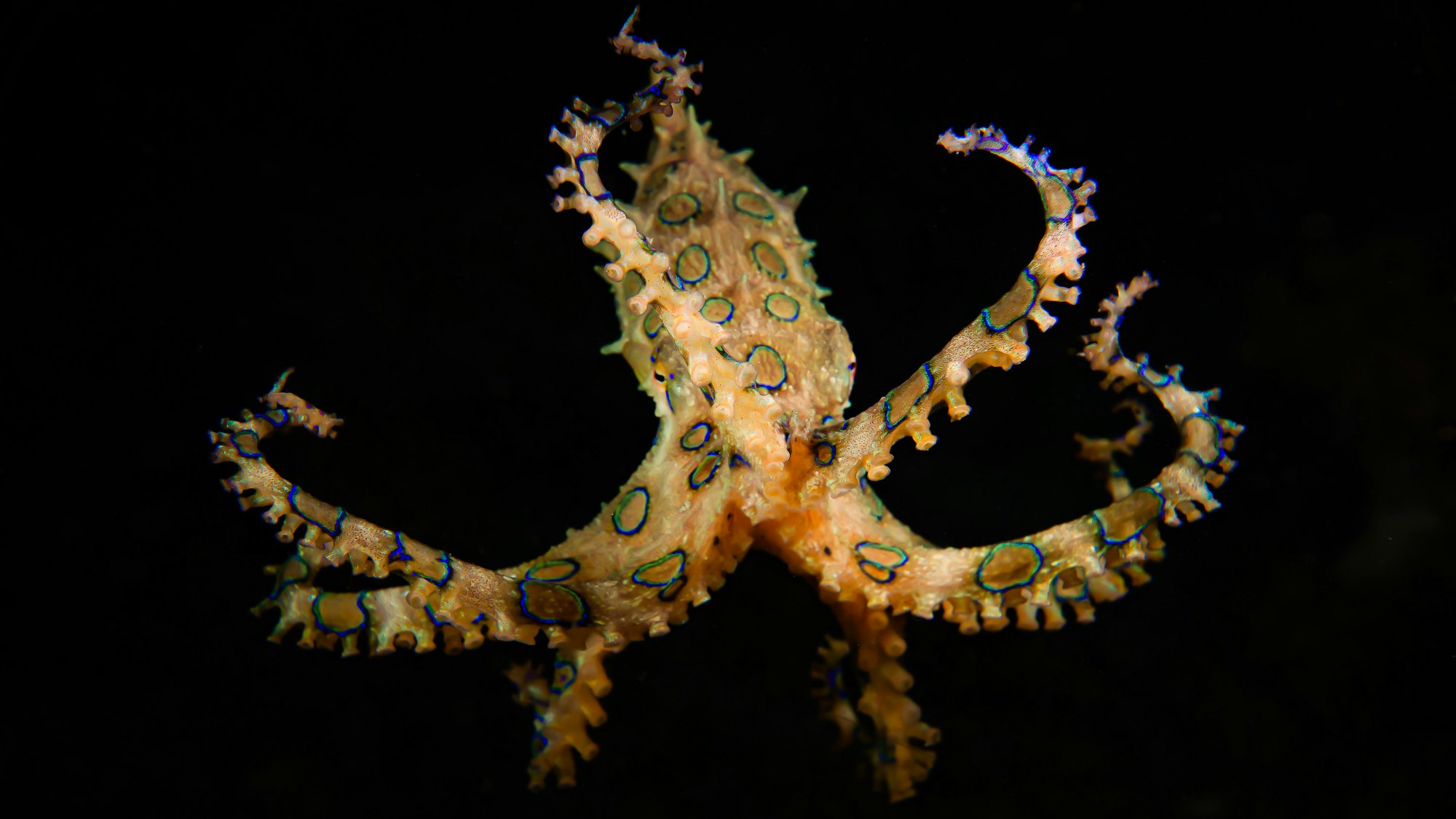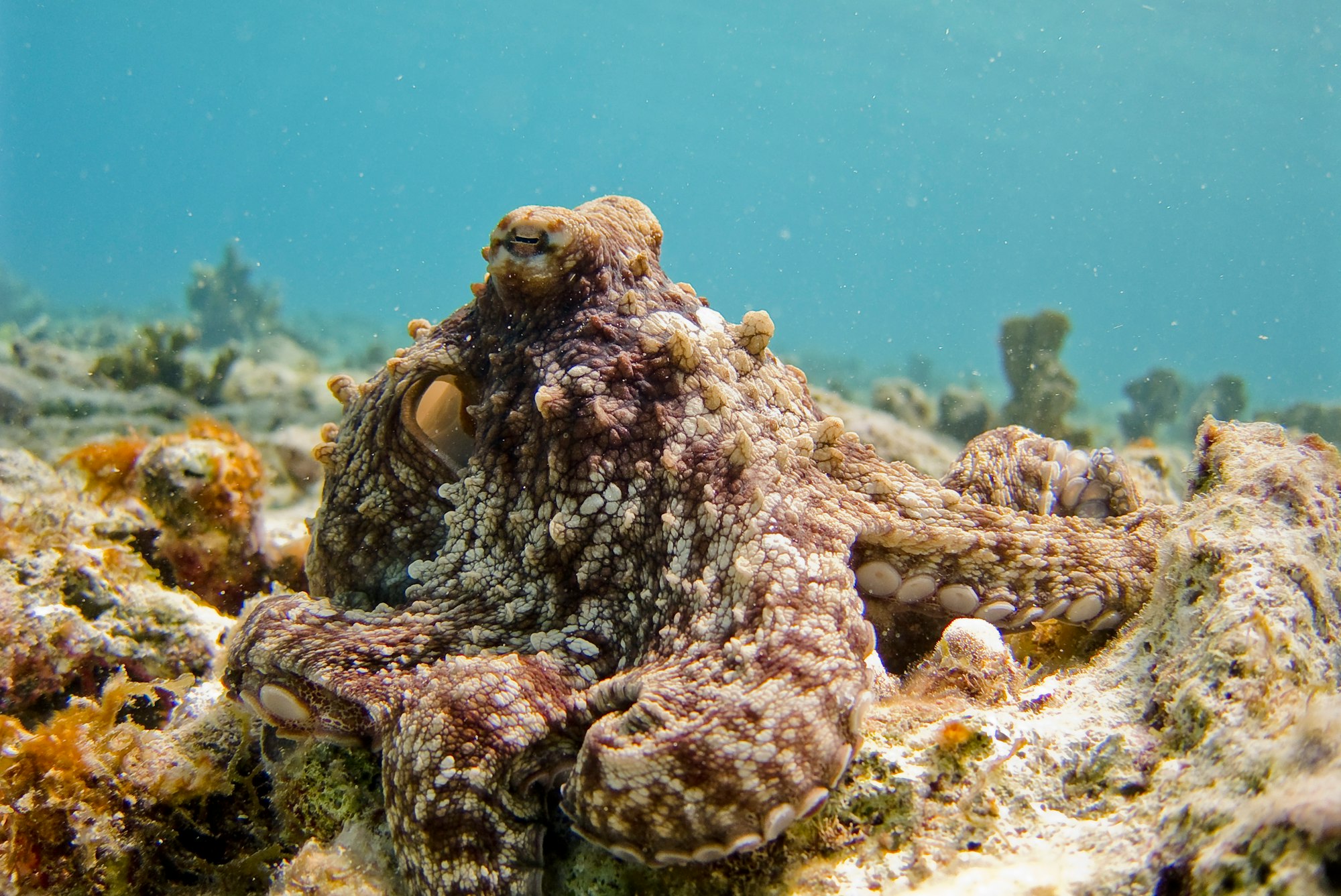A Hunter Of The Sea - The Nimble Octopus

Nothing is quite so remarkable as an octopus, some zoologists and oceanographists might argue. It is neither as flashy as the paradise fish, as colossal as the Atlantic blue whale, nor even as distributed amongst wildlife at the beach as commonplace sea crabs would be - and yet its anatomy and physiology have time and time again proven their worth in both the scientific and animal-loving communities. Watching documentaries about them with my nephew has also personally made me quite a large fan of the lot, particularly after experiencing the thrill of seeing the occasional individual set up lures to trap its prey. (Octopuses do have a knack for the television, I tend to find.)
It is not just their ability to hunt that makes octopuses so fascinating, however. Many species also exhibit astounding sociological behaviours between their peers, learning from their community to obtain the best chance to find a mate. Combined with their incredible ability to adapt to their physical surroundings (as we explore below), it is no exaggeration to say that octopuses have some of most advanced brains and flexibility underwater. Other equally interesting characteristics include their diverse set of defence mechanisms, spewing ink out in the face of predators; their intricately developed anatomy and spatial awareness; and the slew of unique metabolic quirks that make octopus cells different from all other organisms that we know of.
The Anatomy Of An Octopus
Belonging in the taxonomic Order Octopoda of the Class Cephalopoda, octopuses are anatomically rather strange creatures. First, they have eight suction cup-riddled arms (not tentacles!) that surround a sunken, narrow mouth in the centre of its radially symmetrical body. This becomes stranger still when you realise that the mouth is not only encompassed by a sharp beak - yes, a beak as in the one in birds - but it contains a curling tongue inside that is covered with hundreds of teeth (known as a radula). The reasoning behind these sharp edges, as I understand it, is that teeth are more efficient at cracking open a crab shell when they are more numerous and widespread around an octopus' mouth. Additonally, powerful muscle contractions allow them to essentially squeeze prey to death once stuck inside, after which it is pulled into the oesophagus via peristalsis.

Most organs in an octopus are then found in its head, trailing behind it as it swims along the water. Though this should probably be obvious given the lack of space elsewhere in their body, I must admit that I did a double-take when I found that their digestive system, respiratory system and gonads are so close to each other that they all occupy the same body part. Nevertheless, the digestive system was particularly peculiar to see, with a compartment known as the abomassum that secretes acid and digestive enzymes into the stomach. From here, digested food is transported through a spiralling small intestine and colon, finally entering the rectum to be excreted out of the head's funnel. Somewhat similar to the human digestive system, I suppose - except for the greater number of circles and spirals that make it up.
Buried within the tangle in the head lies the liver, with pretty much the same function as with ours, and its three hearts. Why three? You see, octopuses do not carry the same constituent blood as we do. Specifically, instead of using haemoglobin to transport oxygen around the body, they use a related protein known as haemocyanin. The difference is that the former contains iron prosthetic groups to bind oxygen molecules, while the latter features copper groups. In turn, you might be amazed that octopus blood is not red - it is blue! Since haemocyanin is not quite as good at binding to oxygen as haemoglobin is, this also means that octopuses need to replenish their oxygen supplies more frequently than we do; hence the two hearts that pump blood into its gills, and the other that pumps it around the body.
Besides the ctenidium (pronounced with a silent 'c') - which is the mollusc version of fish gills - octopuses have a few other interesting organs to inspect. Take the poison sac, for instance. As the name suggests, this small organ is the main storage for an octopus' venom. Coupled with their salivary glands (which secrete venom), this allows octopuses to inject paralytic toxins into prey through their beaks, rendering them harmless and easy to gobble up. Fortunately for us, their venom is usually quite tame and ineffectual on humans. That is, with the exception of the blue-ringed octopus (Hapalochlaena fasciata) - a species native to Australia that produces one of the most potent venoms in the world (because Australian wildlife really is just that dangerous).

Where there is a head, of course, there must also be a brain. In the case of an octopus, though, it is actually located beneath most of the other organs in the same region. Positioned directly next to its eyes, this central brain (the largest out of all invertebrates) is thought to coordinate most of the hormonal signalling and metabolic regulation in the body, alongside its role in muscular movement. Notice, however - this is a 'central' brain because it is the largest in the body, not because it is the only one.
With this in mind, let's go back to the octopus' namesake: its arms. In order for octopuses to display the flexibility and spacial awareness they are known for, each arm must have some way to respond to changes in its environment by itself. As such, at the top of the arms reside miniature 'lesser' brains that are thought to be independent of the central brain, responsible only for their respective limb's sensory motor movement - similar to the cerebellum present in mammals and corvid birds. Being a great example of a decentralised nervous system, this trait further allows octopuses to retain some of the highest intellects in the Animal Kingdom.
The neurology of octopuses does not end there. Past genetic research has given us insight into the genomics inside their individual nerve cells, identifying which genes have been conserved in different species - and it might interest you to know that different octopuses actually do not vary much at all in their DNA sequences. Now, this might sound fairly obvious, given that they all come from a fairly recent evolutionary ancestor. The interesting part, however, is that the sections in DNA used to modify mRNA transcripts (which are messenger molecules that 'transfer' information from DNA to the cytoplasm to make proteins, such as collagen or actin) are far more similar between species than other genes. Moreover, octopus cells are known to have more developed RNA modification mechanisms than most other organisms, consequently making their proteome (all the proteins that a cell can make) that much more expansive.
Since RNA is not the main storage of information in the cell, this kind of RNA-editing is more flexible to change than DNA mutations and is therefore theorised to be key to their physiological adaptability. As aforementioned, this is also the most common in nerve cells and so might have to do with their being so clever - both when hunting and when socialising with other octopuses.
Hunters And Introverts
Previous studies inspecting their behaviour and adaptive responses have given us proof of the intelligence in octopuses. In the lab, they are easily able to distinguish whether visual or tactile stimuli offer positive or negative rewards, and have been witnessed to accumulate experience to later make preference-based judgements in such situations. Naturally, this is a consequence of their evolutionary niche as underwater hunters; being capable of hiding in a cavern or morphing to an appropriate colour, for example, would have been extremely useful when preying on unsuspecting crustaceans on the sea floor. Natural selection at its prime.
Notice their ability to camouflage by altering their skin colour. Although this is normally associated with chameleons, I would actually say that octopuses are rather more proficient at it (some more than others). Let's look at the Mimic Octopus (Thaumoctopus mimicus), for instance. Native to the tepid waters of the Indian Ocean, this species of octopus has been witnessed to change not only its colour to exactly match with its surroundings - but also the very texture of its body. If one is lying on a smooth dune with few indents in sight, it will be smooth and beige; and if it is sitting on the craggy surface of boulders underwater, it will in turn appear rough with varying shades of grey (no pun intended).

Some octopuses also make use of their colour change to attract mates. Being natural hunters, however, most octopus species are lonesome creatures. They usually only group together at specific times in the year, whether it is to mate or gather for warmth - though even then some tend to become cannibalistic towards their peers. (Octopuses are introverts to the very core.) Nevertheless, previous experiments have shown that octopuses do harbour social awareness. In particular, males are known to be rather aggresive with each other, fighting using their size (or sometimes with clever tricks!) to impose a social hierarchy between them. Researchers from the Okinawa Institute of Science and Technology, Japan, have further demonstrated that both male and female octopuses usually prefer to hang out with females. More research is required to understand why this is the case - but I digress.
As some of the most successful species on the planet, octopuses are clearly doing something right. It should be no surprise, then, that both industries and researchers are taking inspiration from their form to come up with innovative products themselves. Some are trying to develop adhesive patches similar to their suction cups, while others are mimicking their arms' flexibility to create more advanced robotic limbs. Personally, though, I must admit that such products are somewhat lackluster in comparison. Octopuses are awesome, after all.
References
- Kennedy, E.B.L., et al (2020). Octopus arms exhibit exceptional flexibility. Sci Rep 10:20872. Retrieved from https://doi.org/10.1038/s41598-020-77873-7
- Hochner B. (2012). An embodied view of octopus neurobiology. Current Biology 22(20):R887-92. Retrieved from https://doi.org/10.1016/j.cub.2012.09.001
- Gutnic, T. & Kuba, M. J. (2018). Animal Behavior: Socializing Octopus. Current Biology 28(19):R1147-R1149. Retrieved from https://doi.org/10.1016/j.cub.2018.08.006
- Liscovitch-Brauer, Noa et al. (2017). Trade-off between Transcriptome Plasticity and Genome Evolution in Cephalopods. Cell 169(2):191-202. Retrieved from https://doi.org/10.1016/j.cell.2017.03.025
- Baik, S., Kim, D. W., Park, Y, Lee, T.-J., Bhang, S. H. & Pang, C. (2017). A wet-tolerant adhesive patch inspired by protuberances in suction cups of octopi. Nature 546:396–400. Retrieved from https://doi.org/10.1038%2Fnature22382
- Klopper, A. (2021). Origami octopus. Nature Physics 17:1073. https://doi.org/10.1038/s41567-021-01385-y
